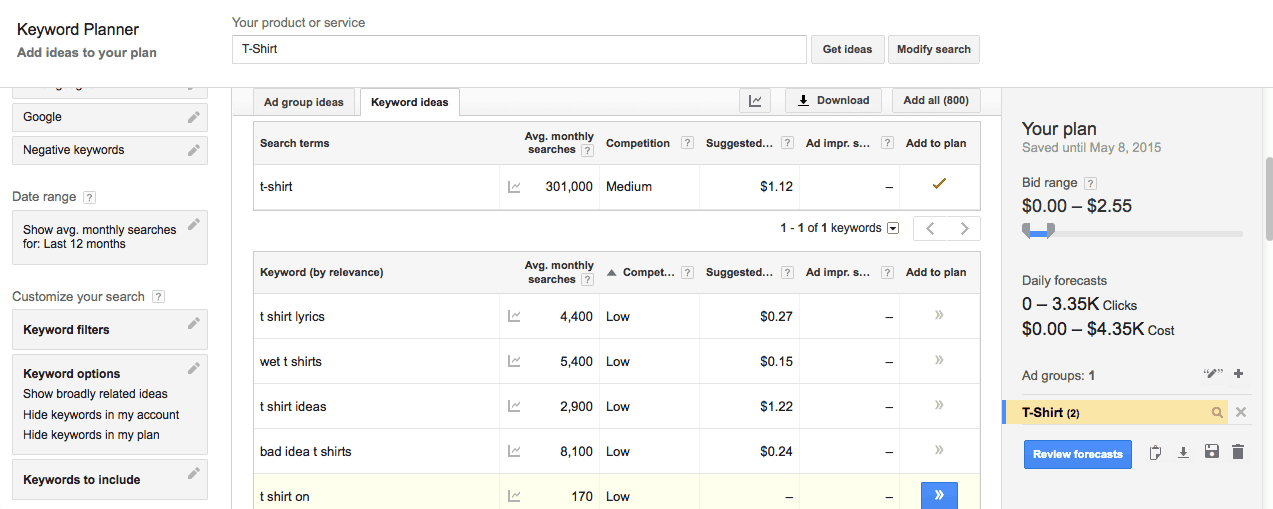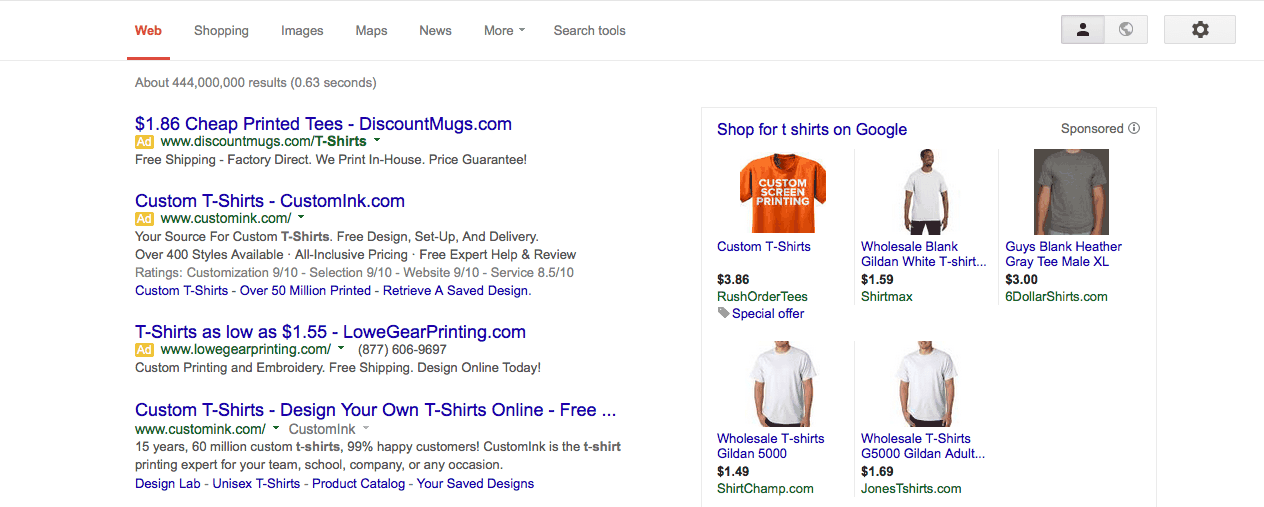What’s true of all users using a search engine? Well, they’re searching for something. Search Engine Marketing (SEM), or advertising on search engines, is a unique form of marketing because that potential customer is already looking for something, so ads often don’t feel like ads. SEM is the paid version of Search Engine Optimization (SEO), and usually, has a higher rate of online store conversion than many other types of advertising. Most SEM ads are Pay Per Click. In case you didn’t catch on from the name, in this form of advertising, you only pay when someone clicks on your ad, not when someone sees it. So not only does SEM have a high conversion rate, you also pay based on clicks and not just the number of impressions. Okay, so that makes sense—but how do I get started? Buying ads on search engines is less complicated than it sounds, but to get started, there are a few basics to understand first. You can advertise on many different search engines, and the exact steps to get started will vary based on what search engine you select. The most popular options are Google, Bing, and Yahoo. But even across the different platforms, there are a few universal basics: keywords, location, bidding and ad content.
Choosing a keyword
SEM is keyword based. If you want your product to show up when someone searches for “cool t-shirt designs,” then your keyword would be “cool t-shirt designs.” You can choose just one or several. On Google, you can use the Google AdWords Keyword Planner to see how many times that keyword is searched for monthly. The “competition” column also indicates how many other websites are using that keyword. When advertising instead of just developing an organic search engine optimization plan, pay attention to the suggested bid column as you choose a keyword to find the best value. For example, “cool t-shirt designs” actually costs a little more than just “t-shirts,” and t-shirts has a lot more monthly searches.
Narrowing it down with location
If you’re a local business though, you don’t want to pay to advertise to someone who is halfway across the world and will never set a foot inside your store. You can choose areas—such as a single zip code or an entire country—to help get your ads to the right audience.
Bidding on a keyword
Once you choose a keyword, you’ll choose a price range—that’s how much you are willing to pay per click. Generally speaking, the more you bid, the more often your ad will be at the top instead of someone else’s ad—it’s like an auction for ad placement. Google’s Keyword Planner includes a suggested bid to help out. The suggested bid is based on how many people search for that keyword and how many other advertisers use that keyword.
Writing an ad
Search engine ads are short and sweet—Google limits ads to two 35 character lines and a 25 character headline. It’s a good idea to use the keyword in the headline since research shows that increases the chances of a click. Use the limited space to describe a benefit or feature, remembering you have a very short space to grab the reader’s attention. For additional information view this handy video which walks through how the AdWords Auction system works: [youtube id=”PjOHTFRaBWA?rel=0″ width=”678″ height=”350″ autoplay=”no” api_params=”” class=””] Now that you know a few SEM basics, you can head to your favorite search engine’s advertising platform, whether it is Google or Bing/Yahoo and get started!


